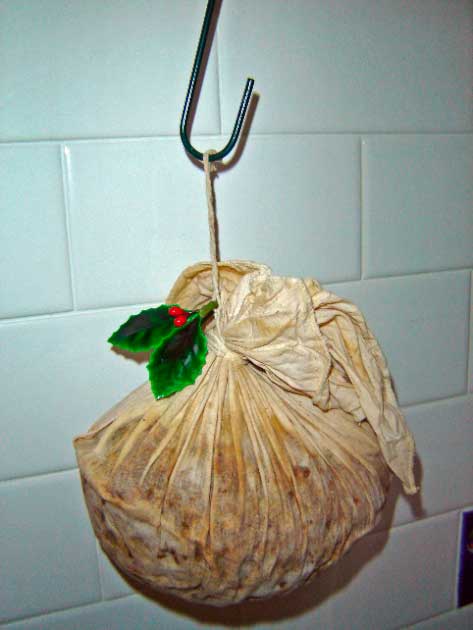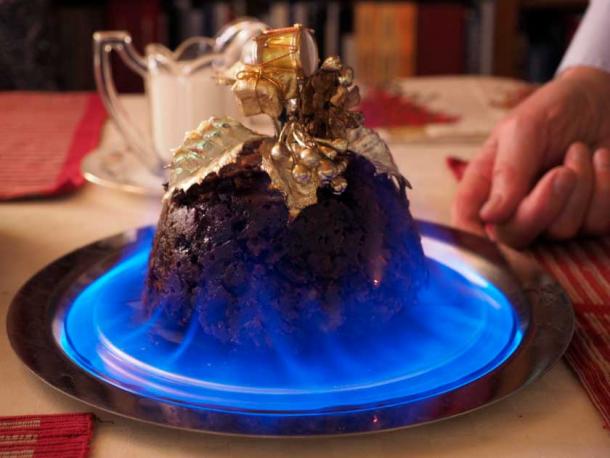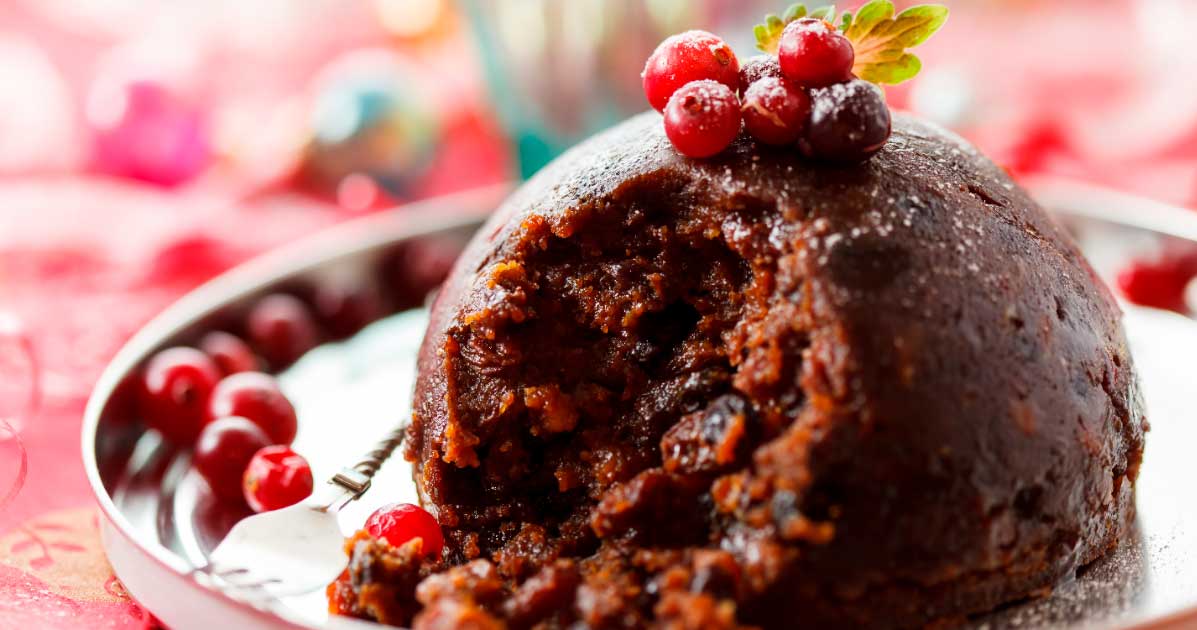Christmas Pudding: Savor the Flavor of Ancient Tradition!
Every family has their own holiday traditions, but one tradition that goes back centuries is the making of Christmas pudding. Christmas pudding is a traditional dish made in many British households during the holiday season and typically consists of ingredients, such as eggs, fruits, and nuts. But when was Christmas pudding first made, and how has it become the British holiday staple that it is today? Below, we’ll share a bit more about the history of traditional Christmas pudding and give you some ideas of ingredients to include in your pudding this year.
From Meat Porridge to Fruity Pudding
The earliest records of Christmas pudding can be traced back to the 14th century. Back then, Christmas pudding was actually known as a unique porridge called frumenty. Frumenty was a thick wheat porridge typically made with beef, mutton, meat broth, eggs, currants, prunes, raisins, wines, and spices.
Some families would prefer it without meat on meatless religious days, which involved cooking it with milk rather than meat broth. Wheat would be boiled until it was tender and mixed with the other ingredients to thicken it into a savory, warm porridge perfect for a chilly Christmas Eve, or Christmas morning in some areas.
Over time, frumenty evolved closer and closer to the Christmas pudding we know and love today. Around the 16th century, the original recipe was taken and adjusted to be even thicker than before. Additional eggs, breadcrumbs, dried fruit, and spirits were incorporated into the dish to make it more like a thick pudding rather than a porridge.
This extra flavor made it a hit, and it became a traditional Christmas meal around the mid-17th century. Although it was banned by the Puritans for a few decades when they banned Christmas entirely, believing it was wasteful to celebrate with so much food, it was brought back in the 18th century by King George I, who liked its flavor.
- An Ancient Treat: The Rich History of Fruitcake
- What Would You Have Eaten for Christmas in Medieval Times?

An advertisement for Christmas pudding, circa 1870 (Boston Public Library / CC BY 2.0)
Molds, Tokens, and Fortunes for the New Year
Modern-day Christmas pudding was finally created during the Victorian era when upper-class Victorian families would make their puddings in special molds. These molds would shape the pudding to look like castles or towers, giving them the dome-like shape we are familiar with today. Lower-class families typically just had their Christmas puddings in spheres, shaped by the pudding cloth they were boiled in.
- Harking Back: The Ancient Pagan Festivities in our Christmas Rituals
- Ancient Origins of Favorite Christmas Traditions PLUS Those You May Never Have Heard About

Christmas puddings are often dried out on hooks for weeks prior to serving in order to enhance the flavor. This pudding has been prepared with a traditional cloth rather than a basin. (DO’Neil / CC BY SA 3.0)
In some regions, additional traditions included putting items inside the pudding. These items are sometimes called tokens, and bestow some sort of fortune on the person finding a token. Finding a silver coin in your Christmas pudding means you will have good luck in the coming year, while a dried bean found in the pudding would make that person the ‘king’ or ‘queen’ of the evening. A bachelor’s button or spinster’s thimble in the pudding meant that person would remain single for the coming year, while a ring would indicate that you will be married.
Nowadays, Christmas pudding can be found in many parts of the world outside of Britain. Families in Australia, South Africa, and even Canada now celebrate the holidays with this tasty treat. Though each location may have a slightly different way of doing it, such as Canadians including potatoes, the basics of the dish still remain the same.
Easy Mixing: Making a Traditional Christmas Pudding
Part of the tradition of Christmas pudding includes the superstitions surrounding the flavorful meal. Throughout history, many families believed that Christmas pudding needed to be made with 13 ingredients to represent Jesus and his disciples. They also believed that every member of the family needed to be involved in cooking the pudding, taking turns stirring it from east to west, in honor of the wise men. Once the pudding was finished, it would sometimes have spirits poured over it and be lit on fire as a display of Jesus’s great power.

A Christmas pudding being flamed after alcohol has been poured over it (James Petts / CC BY SA 3.0)
These 13 traditional ingredients include brown sugar, breadcrumbs, flour, eggs, raisins, currants, suet, citron, lemon peel, orange peel, spices, milk, and brandy. These ingredients are mixed together and boiled in a pudding cloth to cook and become a solid pudding. Today, Christmas pudding is often steamed in a bowl for cleaner preparation, but it can be made either way. You may also want to use a mold to give your pudding a special shape, like the Victorians did!
Although you can technically choose which fruits and nuts to include in your Christmas pudding, some are more common than others. Dried fruits such as sultanas, apricots, pears, raisins, and currants are common in Christmas pudding and bring lots of fiber and nutrients to the dish. Common nuts incorporated into the dish include almonds, pecans, walnuts, and hazelnuts, which provide lots of vitamin E in the dish.
While lots of Christmas meals are packed full of sugar and other unhealthy (but delicious) ingredients, Christmas pudding can make a healthy addition to your spread. Many of the ingredients are natural, have a low glycemic index, and are packed with essential vitamins and nutrients. It’s a great dish to have on Christmas morning to wake you up and help you recover from any late-night Christmas Eve festivities from the previous evening.
Start a New Family Tradition
Christmas pudding has been around for a long time, but it certainly doesn’t seem to be going anywhere anytime soon. If you’re looking for a healthier Christmas treat this year, don’t be afraid to try your hand at a traditional Christmas pudding. Who knows, maybe it’ll become your family’s tradition too!
Top image: The traditional British Christmas pudding has evolved over the years into a sweet delicacy of fruits and nuts. Source: Maksim Shebeko / Adobe Stock
By Lex Leigh
References
Barksdale, N. December 19, 2014. The history of Christmas pudding. History.com. Available at: https://www.history.com/news/the-holiday-history-of-christmas-pudding
Christmas pudding: History and traditions you would love to know. October 27, 2019.PUD for All Seasons. Available at: https://www.pudforallseasons.com.au/blog/christmas-pudding-history-and-traditions/
Cooper, J. n.d. The tradition of the Christmas pudding. Why Christmas. Available at: from https://www.whychristmas.com/customs/christmas-pudding
Cooper, J. n.d. UK Christmas history. Why Christmas. Available at: https://www.whychristmas.com/customs/uk-christmas-history#banning
Flight, H. December 23, 2020. A brief history of Christmas pudding – and why it can actually be quite good for you. The Conversation. Available at: https://theconversation.com/a-brief-history-of-christmas-pudding-and-why-it-can-actually-be-quite-good-for-you-151160
Frumenty. n.d. Medieval Cookery. Available at: http://medievalcookery.com/recipes/frumenty.html



















